The National Autonomous University of Mexico (UNAM) is an important institution of higher learning in Mexico and Latin America:
Introduction: The National Autonomous University of Mexico is the largest and oldest comprehensive university in Mexico, and one of the world's largest institutions of higher learning. It is located in the south of Mexico City, the capital of Mexico. It undertakes many important functions such as teaching, scientific research, and cultural communication. It has trained a large number of outstanding talents for Mexico and even the world, and has made outstanding contributions in academic research, cultural heritage and other fields.
Overview: As of 2023, the school has 42,190 academic staff and 373,340 students in the 2022-2023 academic year, including 233,360 undergraduates, 32,550 postgraduates, and 106,863 high school students. The school has many departments and research institutes, providing a rich curriculum system, covering hundreds of courses from undergraduate to doctoral level. Its main campus, Ciudad Universitaria, covers an area of 7.3 square kilometers. It also has several branch campuses, research institutions, museums and historical sites throughout Mexico and nine other countries.
History: Its predecessor was the Royal Church University of Mexico, which was established on September 21, 1551 by decree of King Philip II of Spain and officially opened on January 25, 1553. During its development, it has undergone many name changes, closures and reopenings. In 1910, under the promotion of Justo Sierra, the then Minister of Education, the scattered colleges were integrated and rebuilt into a civilian university with a university preparatory school attached, and renamed the National University of Mexico. In 1929, it implemented autonomy and began to use its current name. In 2007, the core campus of its university city was listed on the World Heritage List by UNESCO.
Founding time: Its predecessor, the Royal Church University of Mexico, was founded in 1551, and the modern National Autonomous University of Mexico was founded on September 22, 1910.
School strength: The school has achieved fruitful scientific research results. More than 25% of the scientific papers published by Mexican scholars come from researchers in the school. The school has trained many outstanding talents, including five Mexican presidents, Nobel Prize winner Octavio Paz, Nobel Prize winner in Chemistry Mario Molina, etc. It has advanced teaching facilities and rich research resources, with 34 research institutions, 26 museums and 18 historical sites.
Institutional nature: A public research university funded by the government. While maintaining administrative independence, it is subject to certain government supervision.
Educational philosophy: The school motto "Speaking with my blood, my soul" (Por mi raza hablará el espíritu) emphasizes the humanistic mission of Latin American intellectuals, encourages teachers and students to actively explore knowledge, serve the society, and cultivate students' sense of social responsibility and mission.
Key laboratories and disciplines: No key laboratories have been specified. The disciplines are strong and have obvious advantages in many fields. The medical field has a long history and has trained a large number of professional talents; the engineering discipline focuses on practice and innovation, providing support for national infrastructure construction, etc.; in the humanities and social sciences, it has made remarkable achievements in history, philosophy, and literature research, promoting cultural inheritance and development; in the field of natural sciences, the scientific research level of disciplines such as mathematics and physics is relatively high.
Faculty: There are many colleges such as accounting and business administration, architecture, chemistry, dentistry, economics, engineering, law, medicine, philosophy and literature, politics and social sciences, professional research, psychology, science, veterinary medicine and zoology. There are also professional schools such as music, nursing and obstetrics, plastic arts, and social work.
Ranking: Ranked 94th in the "2025 QS World University Rankings", it has long been in a leading position in Latin America and is a representative institution of higher education in Mexico.
Fees: Free education was implemented for a long time, and the proposal to charge tuition in 1999 triggered student protests. At present, the tuition for domestic students is relatively low, and there are certain financial aid policies for students with financial difficulties; the fees for international students may be different, depending on the major and course.
Campus environment: The main campus "University City" has a unique architectural style, integrating traditional and modern features. There are many mosaic murals created by well-known Mexican artists on campus, showing the history and culture of Mexico before the Spanish period. The campus has reasonable functional divisions, and the teaching area, scientific research area, living area and other facilities are complete. There are modern teaching buildings, libraries, laboratories, as well as sports stadiums, student activity centers and other leisure places.
-
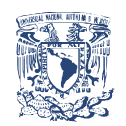
National Autonomous University of Mexico
-

Anahuac University of North Mexico
-

Universidad Autonoma de Guadalajara
-
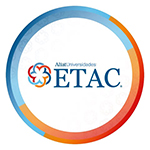
Universidad ETAC
-

Meritorious Autonomous University of Puebla
-
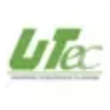
Technological University of Tulancingo
-
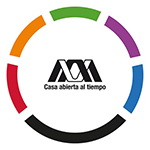
Metropolitan Autonomous University
-
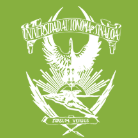
Autonomous University of Sinaloa
-
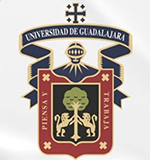
University of Guadalajara
-

Technological University of Huejotzingo
-

Mesoamerican University
-

Istmo University
-

Mariano Galvez University of Guatemala
-

Regional University of Guatemala
-

Galileo University
-

Francisco Marroquín University
-

Rafael Landívar University
-

University of the Valley of Guatemala
-

University of San Carlos of Guatemala
-

Technological Institute of Tlaxcala Plateau
-

Golfo University
-

Technological University of South Sonora
-

Technological University of Huejotzingo
-

Tizimín Institute of Technology
-

Chilpancingo Institute of Technology
